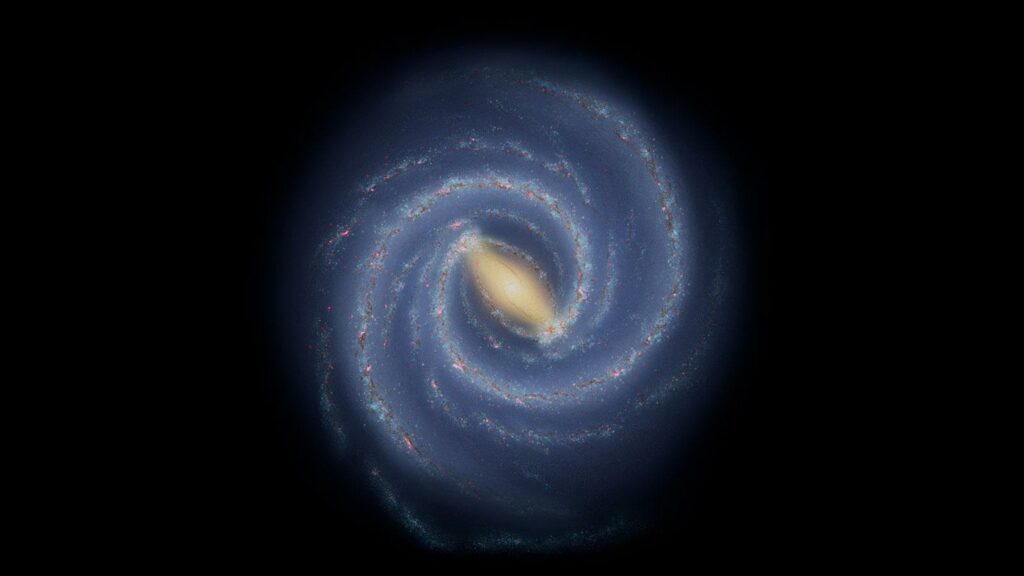Astronomers have discovered a population of millions of stars at the center of the Milky Way. It represents the remains of an ancient protogalaxy, which became the basis for our stellar home.

The Milky Way began to form about 12.5 billion years ago, when several large star clusters and gas clumps joined to form a protogalaxy. In the future, it went through a series of mergers and collisions with other galaxies until, finally, it acquired its current form.
Many scientists have long suspected that traces of this original protogalaxy can still be found in the center of the Milky Way. An international team of researchers set out to test this assumption. For this, they turned to the Gaia telescope data archive. They were interested in the oldest stars in the core of our galaxy, characterized by exceptionally low metallicity (concentration of elements heavier than hydrogen and helium), not exceeding 3% of the solar.
The scientists then analyzed the distribution of these stars. Having discarded those luminaries which orbits pass through the halo of the Milky Way, they have a sample of 18 thousand ancient luminaries. In the course of subsequent modeling, astronomers came to the conclusion that they were part of a protogalaxy which diameter reached 18 thousand light-years, and the mass was 50-200 million times the mass of the Sun.
According to the researchers, this is the original core of the Milky Way. They attribute this to the compactness of the ancient protogalaxy, which suggests that since its formation, little has bothered it. Of course, later other protogalactics collided with the Milky Way, increasing its mass. But they did not reach the core, and it was able to maintain its original shape.
Earlier we wrote about how astronomers created a map of the distribution of dust in the Milky Way.
According to https://www.sciencenews.org
Follow us on Twitter to get the most interesting space news in time
https://twitter.com/ust_magazine
